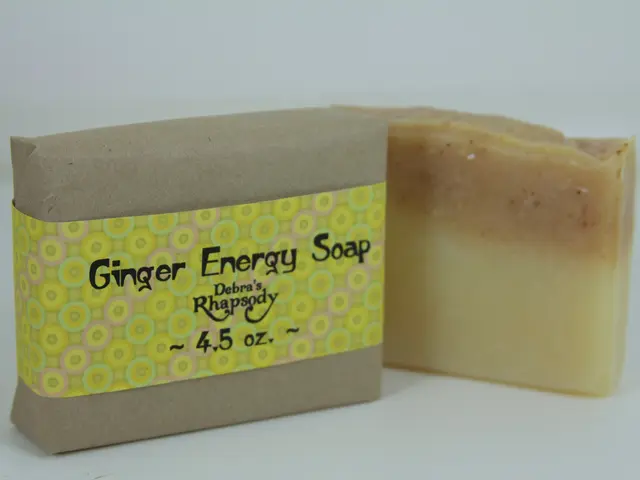Persisting prejudices surrounding gender roles remain prevalent, and strategies for businesses to transcend these outdated expectations.
Breaking gender stereotypes in advertising isn't just a hot topic, it's a necessity. And today's consumers expect it. Brands that challenge traditional gender roles and showcase diversity in their communications are winning cultural relevance and commercial success.
From beer commercials promoting inclusivity to Indian wedding campaigns challenging norms, we've seen brands lead societal change by confronting gender stereotypes head-on. And it's paying off – progressive messaging often sparks stronger brand affinity among audiences.
But this isn't just about being trendy or politically correct. Advertising can be a powerful tool for promoting gender equality and breaking down harmful stereotypes. Studies show that media images – especially in ads – have more impact on gender equality than books do.
Brands can show their customers' diversity, ultimately helping create a world where all genders are respected, accepted, and valued. And it's not about abandoning brand identity. It's about evolving with the audience. Consumers today expect brands to mirror modern values.
Take the Heineken commercial, for instance. The ad challenges societal norms by showing men and women enjoying a beer together without resorting to objectification or parody. Or Mohey's wedding campaign in India – one of several standout ads that challenge gender norms – showing same-sex couples tying the knot.
The beauty brand SK-II's "Change Destiny" campaign also stands out, contesting conventional beauty standards and taking a stand for gender equality. These ads may seem like small steps, but they're leading the way in reshaping brand storytelling.
The advent of social media has only made brands more accountable for their portrayals of gender. No longer can they rely on traditional gender roles without risking backlash. Public critique shifts the power dynamic, forcing brands to adapt and evolve their advertising strategies.
If a brand gets it wrong – like Dolce & Gabbana, who faced global criticism for a racially insensitive ad – the repercussions can be swift and severe. On the flip side, an ad that breaks stereotypes – like Pantene's "Labels Against Women" campaign – can win headlines and hearts.
Recognizing this shift, the UK's Advertising Standards Authority (ASA) banned harmful gender stereotypes in British ads in 2019. The new rules required advertisers to eliminate depictions that reinforce traditional gender roles, such as portraying women solely as caregivers or men as inept in domestic roles. The goal: promote a more inclusive and realistic portrayal of gender.
This regulatory shift reflects a broader movement calling for brands to rethink how gender stereotypes in advertising influence public perception. When ads reinforce gender norms, whether intentionally or not, they shape attitudes that persist beyond the screen. Eliminating harmful tropes is not just about compliance – it's about aligning brand values with a changing cultural landscape.
So, what does it take to get it right? Inclusive advertising that acknowledges gender diversity not only earns goodwill but also strengthens a brand's strategic positioning in competitive markets. Today's consumer increasingly expects to see the reality of their lives and gender equality from the brands they engage with. It's a win-win situation.
Effective ads that break stereotypes don't just focus on visuals – they're built on authentic messaging and insight. Brands must challenge gender roles not only by showing diverse faces, but by telling different stories. The most compelling campaigns highlight real struggles, joy, leadership, and complexity across all gender identities – because at the heart of it all, we're all just people striving to be seen and understood.
[1] The benefits of diverse representation in advertising, Harvard Business Review, May 20, 2020,https://hbr.org/2020/05/the-benefits-of-diverse-representation-in-advertising
[2] The State of Women in Gender Equality, McKinsey & Company, 2020,https://www.mckinsey.com/business-functions/mckinsey-analytics/our-insights/the-state-of-women-in-gender-equality
[3] Gender Equality in Advertising: Why It Matters, Forbes, October 15, 2019,https://www.forbes.com/sites/forbestechcouncil/2019/10/15/gender-equality-in-advertising-why-it-matters/?sh=1e56aeb93ce0
[4] The Importance of Women in Leadership, World Economic Forum, 2018,https://www.weforum.org/agenda/2018/10/the-importance-of-women-in-leadership/
[5] Intent-Based Marketing: The New Era of Personalization, McKinsey & Company, February 27, 2020,https://www.mckinsey.com/business-functions/mckinsey-analytics/our-insights/intent-based-marketing-the-new-era-of-personalization
- Brands can leverage market research to understand their audiences' expectations and preferences towards lifestyle, fashion-and-beauty, education-and-self-development, and personal-growth, ensuring their advertising campaigns align with modern values and promote gender equality.
- Social media continues to hold brands accountable for their portrayals of gender, as public critique shapes the power dynamic and forces them to evolve their advertising strategies. This shift in advertising can impact various sectors, including fashion-and-beauty, entertainment, and education-and-self-development.
- To fully maximize the potential of their advertising, brands should not only focus on visually diverse representation but also craft authentic messaging that challenges gender roles, highlights real struggles and complexities of all gender identities, and encourages social-media engagement to boostbrand affinity across different sectors such as fashion-and-beauty, education-and-self-development, and personal-growth.








